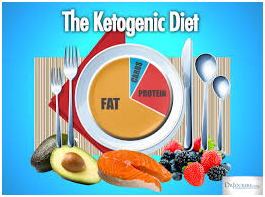The Ketogenic Diet and Epilepsy

The ketogenic diet was planned in 1924 by Dr. Russell Wilder at the Mayo Clinic. In spite of being very powerful in treating epilepsy, it dropped out of design because of the surge in new against seizure medicines in the 1940s.
The name ketogenic implies that it produces ketones in the body. Ketones are shaped when the body utilizes fat for its wellspring of vitality.Typically the body utilizes starches, (for example, sugar, bread, pasta) for its fuel, but since the ketogenic diet is low in sugars, fats turn into the essential fuel.
Ketones are not unsafe. They can be recognized in the pee, blood, and breath. Ketones are one of the more probable systems of activity of the diet; with higher ketone levels regularly prompting enhanced seizure control. Be that as it may, there are numerous different speculations for why the diet will work.
Who will ketogenic diet help?
Specialists more often than not prescribe the ketogenic diet for youngsters whose seizures have not reacted to a few diverse seizure meds. It is especially suggested for kids with the Lennox-Gastaut disorder.
The ketogenic diet is generally not prescribed for grown-ups, for the most part in light of the fact that the confined nourishment decisions make it difficult to take after. Yet, thinks about done on the utilization of the diet in grown-ups demonstrate that it appears to work pretty much too.
The ketogenic diet has been appeared in little studies to be especially useful for some epilepsy conditions. These incorporate juvenile fits, Rett disorder, tuberous sclerosis complex, Dravet disorder, Doose disorder, and GLUT-1 lack. Utilizing a recipe just ketogenic diet for newborn children and gastrostomy-tube nourished kids might prompt better consistence and perhaps even enhanced viability. The ketogenic diet functions admirably for kids with central seizures, yet might be less inclined to prompt a quick without seizure result.
How does the ketogenic diet work?
The ordinary ketogenic diet, called the “long-chain triglyceride diet,” gives 3 to 4 grams of fat for each 1 gram of starch and protein.
The dietician prescribes a day by day ketogenic diet that contains 75 to 100 calories for each kilogram (2.2 pounds) of body weight and 1-2 grams of protein for each kilogram of body weight. On the off chance that this sounds convoluted, it is. That is the reason folks require a dietician’s assistance.
A ketogenic diet “proportion” is the proportion of fat to sugar and protein grams consolidated. A 4:1 proportion is stricter than a 3:1 proportion, and is ordinarily utilized for generally youngsters. A 3:1 proportion is ordinarily utilized for babies, young people, and kids who require higher measures of protein or sugar for some other reason.
The sorts of sustenances that give fat to the ketogenic diet are margarine, overwhelming whipping cream, mayonnaise, and oils (e.g. canola or olive).
By : Natural Health News




